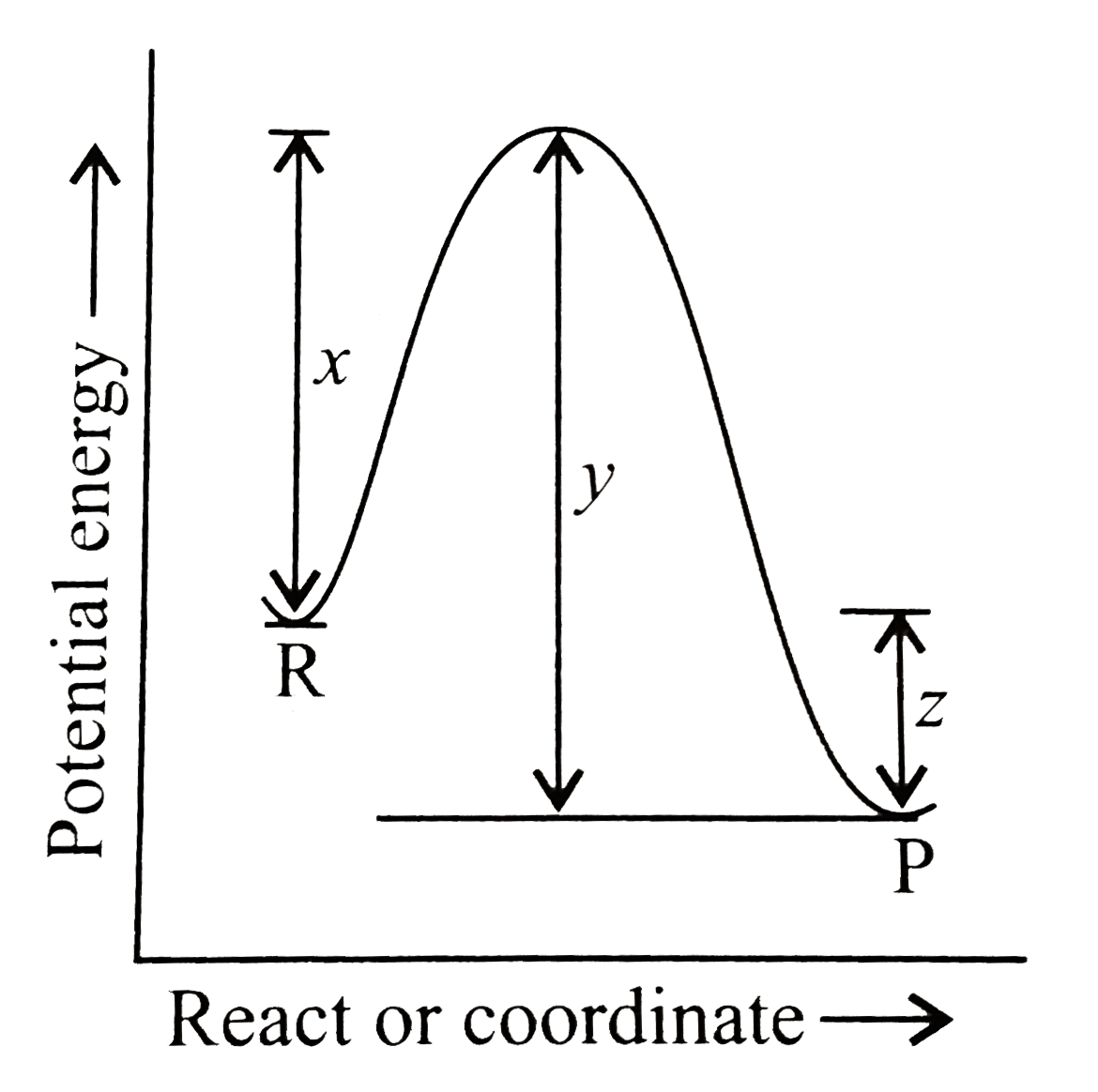The standard reaction Gibbs energy for a temperature T is given by
ΔrG∘=A−Bt
Where A and B are non-zero constants.
Which of the following is TRUE about this reaction ?
Exothermic if B<0
Exothermic if A>0 and B<0
Endothermic if A<0 and B>0
Endothermic if A>0
The correct Answer is:D
To solve the problem, we need to analyze the given equation for the standard reaction Gibbs energy:
ΔrG∘=A−BT
where A and B are non-zero constants, and T is the temperature.
1. Understanding the Gibbs Free Energy Equation:
The Gibbs free energy change for a reaction at standard conditions is given by:
ΔG∘=ΔH∘−TΔS∘
where ΔH∘ is the change in enthalpy and ΔS∘ is the change in entropy.
2. Setting the Given Equation:
We compare the provided equation ΔrG∘=A−BT with the standard Gibbs free energy equation. This gives us:
A=ΔH∘and−B=−ΔS∘
Therefore, we can deduce:
ΔS∘=B
3. Determining Spontaneity:
A process is spontaneous when ΔG∘<0. Thus, we set up the inequality:
A−BT<0
Rearranging this gives:
A<BT
4. Analyzing the Conditions:
- If A<BT, then as temperature T increases, the term BT increases, which means that for a given B, there will be a temperature above which the reaction becomes spontaneous.
- If A is a constant and B is positive, then there exists a temperature T such that the reaction can switch from non-spontaneous to spontaneous.
5. Considering the Sign of A:
- If A>0, then ΔH∘ is positive, indicating an endothermic reaction.
- If A<0, then ΔH∘ is negative, indicating an exothermic reaction.
6. Conclusion:
Since A is a constant and we are looking for conditions under which the reaction can be spontaneous, we conclude that if A>0, the reaction is endothermic. Thus, the correct statement about the reaction is that it is endothermic if A>0.
Final Answer:
The correct statement about this reaction is that it is endothermic if A>0.
The Gibbs free energy change for a reaction at standard conditions is given by:
ΔG∘=ΔH∘−TΔS∘
where ΔH∘ is the change in enthalpy and ΔS∘ is the change in entropy.
We compare the provided equation ΔrG∘=A−BT with the standard Gibbs free energy equation. This gives us:
A=ΔH∘and−B=−ΔS∘
Therefore, we can deduce:
ΔS∘=B
A process is spontaneous when ΔG∘<0. Thus, we set up the inequality:
A−BT<0
Rearranging this gives:
A<BT
- If A<BT, then as temperature T increases, the term BT increases, which means that for a given B, there will be a temperature above which the reaction becomes spontaneous.
- If A is a constant and B is positive, then there exists a temperature T such that the reaction can switch from non-spontaneous to spontaneous.
- If A>0, then ΔH∘ is positive, indicating an endothermic reaction.
- If A<0, then ΔH∘ is negative, indicating an exothermic reaction.
Since A is a constant and we are looking for conditions under which the reaction can be spontaneous, we conclude that if A>0, the reaction is endothermic. Thus, the correct statement about the reaction is that it is endothermic if A>0.
The correct statement about this reaction is that it is endothermic if A>0.
Topper's Solved these Questions
- THERMODYNAMICSBOOK - VMC MODULES ENGLISHCHAPTER - THERMODYNAMICSEXERCISE - JEE ADVANCED (ARCHIVE)
44 Videos
- THERMODYNAMICSBOOK - VMC MODULES ENGLISHCHAPTER - THERMODYNAMICSEXERCISE - LEVEL-2 (NUMERICAL VALUE TYPE)
15 Videos
- THERMOCHEMISTRYBOOK - VMC MODULES ENGLISHCHAPTER - THERMOCHEMISTRYEXERCISE - JEE ADVANCED (ARCHIVE)
31 Videos
- THERMODYNAMICS & THERMOCHEMISTRYBOOK - VMC MODULES ENGLISHCHAPTER - THERMODYNAMICS & THERMOCHEMISTRYEXERCISE - Impeccable
48 Videos
Similar Questions
Knowledge Check
Which of the following is not true about a reversible reaction ?
A(a) The reaction does not proceed to completion.B(b) It cannot be influenced by catalystC(c) Number of moles of reactants and products is always equal.D(d) It can be attained only in a closed container.Which of the following reactions has zero activation energy?
A B
B C
C D
D
Which is true about following reactions ?
 AP is aromaticBQ is aromaticCR is antiaromaticDR is non-aromatic
AP is aromaticBQ is aromaticCR is antiaromaticDR is non-aromatic
Which of the following statements is true for the reaction given below?

View SolutionFor the chemical reaction X Y , the standard reaction Gibbs energy depends on temperature T (in K) as ΔrG0 ( in kJ mol−1 ) = 120−38T . The major component of the reaction mixture at T is
View SolutionA reaction is spontaneous at low temperature but non- spontaneous at high temperature. Which of the following is true for the reaction?
View SolutionFor the given reaction 2A(g)+ B(g) ⇔ C(g) , ΔH = x kJ which of the following favour the reactants ?
View SolutionThe potential energy diagram for a reaction R→P is given below. ΔHɵ of the reaction corresponds to the energy

View Solution

